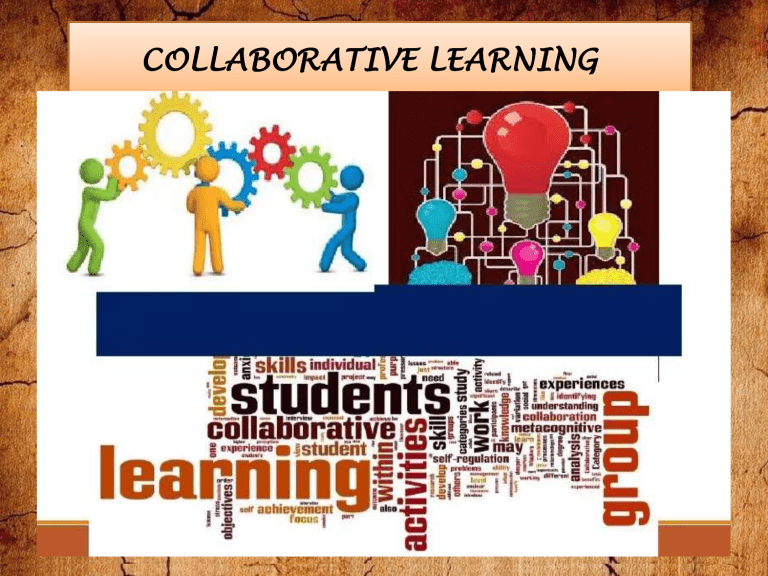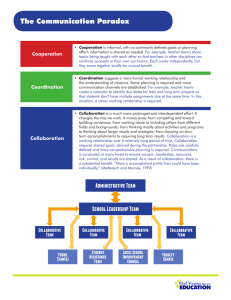
COLLABORATIVE LEARNING WHAT IS A COLLABORATIVE LEARNING? Collaborative learning is just the right way to increase collaboration between learners. The Latin word is collaborare, which is the combination of the prefix “co” (derived from the Latin word “com”), meaning “with or together,” and the word laborare, which means “to labor, toil, or struggle.” To collaborate, therefore, is to labor together, even struggling for a common purpose. Collaboration is an active and deliberate effort at working together. “Collaborative learning” is an umbrella term for a variety of educational approaches involving joint intellectual effort by students, or students and teachers together. Usually, students are working in groups of two or more, mutually searching for understanding, solutions, or meanings, or creating a product. 11 KEY BENEFITS OF COLLABORATIVE LEARNING 1. Improves problem-solving skills . . Encourages social interaction 2 3. Promotes diversity 4. Improves communication skills .5. Inspires creativity 6. Creates trust 7. Improves confidence 8. Encourages engagement 9. Allows people to have fun 10. Develops critical-thinking skills 11. Builds relationships WHY USE COLLABORATIVE LEARNING ? “Students are capable of performing at higher intellectual levels when asked to work in collaborative situations than when asked to work individually. Group diversity interms of knowledge and experience contributes positively to the learning process. (Gokhale, 1995, citing Vygotsky, 1978.) Enhances learner participation and engagement Facilitates peer feedback Offers fresh perspective on subjects STRATEGIES AND ACTIVITIES TDAR – (Think, discuss, Act, Reflect) Think-Pair-Share Project management Peer Teaching Strategy Jigsaw Tug of War Spider Web It’s a Mystery Computer – Mediated Collaboration Live Conferencing Technology Enhanced Writing Platform Online Collaborative Learning Web based Collaborative Learning WHY COLLABORATIVE LEARNING IMPORTANT? 1. 2. 3. 4. 5. Developing social skills. Learn from peers. Build trust Engage in learning. Gain confidence BENIFITS OF EFFECTIVE COLLABORATION Kids learn best in a social environment Subject or topic information can be more effective when it comes from peers. Collaborative learning encourages this social aspect of education and enhances student understanding. The group nature of collaborative learning also promotes interactions. Students are organized in flexible groupings, either at random or by the teacher, to reflect mixed academic ability or shared interests. Educators can share workload and ideas By collaborating on and building a shared playlist of videos, for example, educators share inspiration to develop high-quality resources for their classes.



